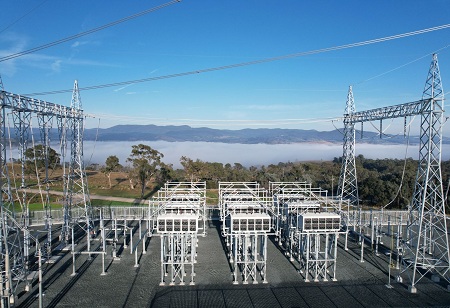
Smart wires and cables are emerging as game-changers with innovations that are reshaping industries all over the world in the age of rapid technological advancement. These novel electrical components combine traditional power transmission capabilities with the latest digital technologies, opening up new possibilities for efficiency, automation, and enhanced performance. The global smart wiring devices market was valued at $7.4 billion in 2021, and is estimated to reach $21.9 billion by 2031, growing at a CAGR of 11.6% from 2022 to 2031. From smart grids in the energy sector to intelligent data communication in telecommunications, smart wires and cables are reshaping the way industries operate. These innovative electrical components are not just limited to transmitting power; they also integrate cutting-edge digital technologies, transforming traditional infrastructure into intelligent and interconnected systems. From energy grids to communication networks and manufacturing processes, smart wires and cables are driving significant changes.
The energy sector is undergoing a profound transformation with the integration of smart grids powered by intelligent wires and cables. Smart grids as modern power systems utilize advanced communication and control technologies to optimize electricity generation, distribution, and consumption. They go beyond traditional power transmission and distribution networks, incorporating digital sensors and communication technologies to optimize energy usage. They act as the backbone of these grids, enabling real-time data collection and analysis. For example, in a smart grid system, sensors installed along power lines can detect faults or outages instantly and relay this information to the utility company. This allows for quicker response times and efficient restoration of power, minimizing downtime for consumers. Shalin Sheth, Founder & Managing Director, Advait Infratech mentioned in an article published in TimesTech.in - One of the primary benefits of using smart grids in the modern energy sector is the ability to promise an energy-efficient future. The dynamic interconnectivity of the advanced systems deliver the ease of seamless response, promoting efficient load management during peak electricity consumption periods. Likewise, by analyzing real-time data on energy usage patterns, utilities can identify areas of high demand and implement load management strategies to prevent grid overload and potential blackouts. Smart wires and cables facilitate demand response programs, enabling consumers to adjust their electricity usage based on real-time pricing and grid conditions. This promotes energy conservation and reduces peak demand, leading to a more stable and efficient grid. With smart wires and cables, utilities can remotely detect and address faults, ensuring quicker restoration during power outages. This enhanced reliability and efficiency benefit both consumers and the grid operators, paving the way for a more sustainable and resilient energy future.
In the telecommunications industry, smart wires and cables are ushering in a new era of connectivity and data communication. These intelligent and advanced components, such as fiber optic cables, offer high-speed data transmission and increased bandwidth, catering to the ever-growing demand for data and connectivity, which is critical for meeting the growing demands of the digital age. With the integration of optical fibers and advanced materials, smart cables enhance data transfer rates and ensure secure and reliable communication across vast distances. For example, in the healthcare industry, smart cables enable real-time transmission of medical data from remote patient monitoring devices to healthcare professionals, allowing for timely and accurate diagnosis and treatment. Moreover, the adoption of smart cables in data centers and telecommunication networks optimizes power consumption and reduces energy costs. Their ability to self-monitor and report performance metrics enables proactive maintenance, minimizing downtime, and improving network efficiency. Additionally, smart cables contribute to future-proofing communication infrastructure by ensuring compatibility with emerging technologies and facilitating seamless upgrades.
In the manufacturing sector, smart wires and cables are revolutionizing industrial automation and process control. These advanced components offer real-time data feedback, enabling precise control and monitoring of equipment and machinery. With embedded sensors, smart cables can detect changes in temperature, pressure, or voltage, ensuring safe and efficient operation in complex manufacturing environments. The integration of smart wires and cables in manufacturing processes also enables predictive maintenance, minimizing unplanned downtime and reducing maintenance costs. By collecting and analyzing data from connected machinery, potential equipment failures can be identified before they occur, allowing for timely maintenance interventions. For example, in an automotive manufacturing plant, smart cables integrated into robotic arms can detect any abnormal changes in temperature or pressure during the welding process. This data can be analyzed in real-time, allowing for immediate adjustments to be made to ensure the quality of the welds and prevent any potential equipment failures. Besides, smart cables support the implementation of IoT (Internet of Things) strategies, connecting different devices and enabling seamless communication for a more interconnected and automated manufacturing ecosystem. With smart wires and cables, manufacturing processes become more streamlined and optimized, leading to increased productivity and cost-effectiveness. The integration of these smart components paves the way for a more interconnected and automated manufacturing ecosystem.
Smart wires and cables are ushering in a new era of innovation and efficiency across industries, from empowering smart grids in the energy sector to transforming communication networks and revolutionizing manufacturing processes. Their integration with advanced technologies, such as sensors, data analytics, and IoT, opens up limitless possibilities for enhanced performance, automation, and connectivity. As industries continue to embrace these transformative components, the future promises a smarter and more interconnected world where efficiency and sustainability go hand in hand. As technology continues to evolve, smart wires and cables will play an increasingly vital role in shaping a smarter and more interconnected future. Industries worldwide are embracing these transformative components to unlock new possibilities and drive positive change for a more efficient and sustainable world.
We use cookies to ensure you get the best experience on our website. Read more...